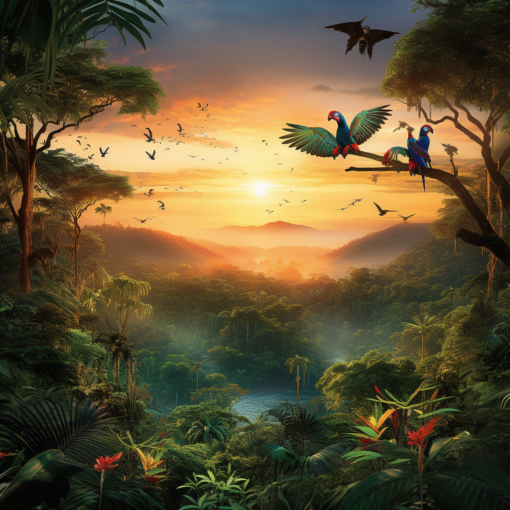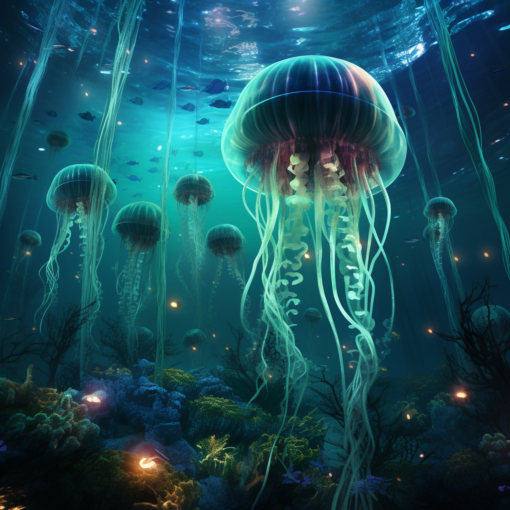Greetings, dear readers! It is I, your ever-curious narrator, Percival Q. Higginbottom. Today, we find ourselves on a journey of aquatic exploration. We dive into the world beneath the waves, into the heart of the planet’s most spectacular and diverse ecosystems – the coral reefs.
Picture, if you will, an explosion of color. An underwater canvas painted with hues of pink, purple, yellow, and a myriad of blues. These colors come alive, swaying gently with the rhythm of the sea. This, dear friends, is the visual symphony that is a coral reef.
What many might mistake as mere underwater shrubbery are, in reality, colonies of tiny animals known as coral polyps. These industrious architects, over generations, have built the sprawling, magnificent cities we know as coral reefs.
Life on the coral reef is a flurry of activity. Schools of fish, resplendent in their colorful scales, dart between the coral branches. A slow-moving sea turtle grazes on seaweed, while a shy octopus changes color to blend with the rocky bottom. From the tiniest, almost invisible shrimp to the majestic, gliding manta ray, coral reefs are a testament to the diversity and adaptability of life.
But coral reefs are not just spectacles of beauty and biodiversity. They are the lifeblood of the ocean, providing food and shelter to a vast array of marine species. They protect our coastlines from the ravages of storms and waves, and they are a source of new medicines and treatments for human diseases.
Yet, these vibrant ecosystems are under threat. Climate change, overfishing, and pollution are causing unprecedented damage to our reefs. But there is hope. Conservation efforts worldwide are working to protect and restore these precious habitats.
Every one of us has a role to play in saving the coral reefs. Simple actions, such as reducing our carbon footprint, choosing sustainable seafood, and not purchasing coral jewelry, can make a world of difference.
Let us cherish our coral reefs, these symphonies of the sea. For in their survival, we find the survival of the ocean, and in turn, our own. Remember, dear readers, we are but a small part of a grand, interconnected ecosystem. Let’s make our part count.
Till our next adventure, Percival Q. Higginbottom.

For further exploration into the fascinating world of coral reefs, I recommend the following resources:
- NOAA’s Coral Reef Conservation Program
- National Geographic’s Coral Reef Guide
- The Coral Reef Alliance
- World Wildlife Fund’s Coral Reefs
- Smithsonian Ocean’s Coral Reefs





6 thoughts on “The Symphony of the Seas: Celebrating the Majestic Beauty of Coral Reefs”
Thanks for sharing. I read many of your blog posts, cool, your blog is very good.
I don’t think the title of your article matches the content lol. Just kidding, mainly because I had some doubts after reading the article. https://accounts.binance.info/en-IN/register-person?ref=UM6SMJM3
Your point of view caught my eye and was very interesting. Thanks. I have a question for you.
Thank you for your sharing. I am worried that I lack creative ideas. It is your article that makes me full of hope. Thank you. But, I have a question, can you help me?
I don’t think the title of your article matches the content lol. Just kidding, mainly because I had some doubts after reading the article.
Your article helped me a lot, is there any more related content? Thanks!